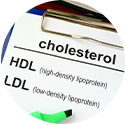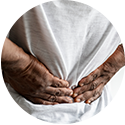In our office we see many patients who have had a long-term problem with their “tennis elbow.” Tennis elbow is a condition of inflammation, its medical name lateral epicondylitis indicates exactly what doctors believe it to be: Outside inflammation “itis” causing pain near the epicondyle (boney prominance) of the elbow on the elbow’s lateral outer side. Inflammation is a symptom of overuse injury. In the case of tennis elbow, it is overuse movement that is causing degenerative breakdown in the Extensor Carpi Radialis Brevis (ECRB), the tendon that attaches to the lateral epicondyle.
There can be many types of treatment for tennis elbow. It is the question of effectiveness that gives these treatments their worth to the patient. The patients that come into our office with problems of tennis elbow have had their fair share of treatments. They have made an appointment at the Magaziner Center for Wellness because they have also had their fair share of failures and are continuing to search for answers.
Treatments for Tennis Elbow – Tape and Brace
A study featured in the journal PM & R : the journal of injury, function, and rehabilitation, (1) looked at patients with a problem of tennis elbow. These patients had a new onset of elbow pain of 12 weeks or less. Conservative care treatments were then applied and studied.
Patients were randomized into three groups
Ten patients received kinesiotaping plus exercises
Ten patients received sham taping (Tape that would not help) plus exercises
Ten patients received exercises only.
All groups received home exercises program including strengthening and stretching exercises. In kinesiotaping and sham taping groups, tapings were performed and changed every 3-4 days for two weeks.
Findings: “Kinesiotaping in addition to exercises is more effective than sham taping and exercises only in improving pain in daily activities and arm disability due to lateral epicondylitis.” In other words, this conservative care did not fix the problem of degeneration.
Counterforce orthoses, elbow braces and elbow bands
If taping was effective in this way, for helping pain and function, so should counterforce orthoses, elbow braces and elbow bands. In fact research shows elbow braces and elbow bands did help function and pain and they did so on a somewhat immediate basis. In the Journal of Shoulder and Elbow Surgery, (2) a 2019 study examining the “immediate sensorimotor effects of elbow orthoses in patients with lateral elbow tendinopathy,” found that:
Better scores were observed with the forearm band, as compared with no orthosis for pain, grip strength, and dexterity.
The elbow sleeve yielded better scores than no orthosis for the following outcomes: joint position, pain, and grip strength.
No statistically significant difference was found between the orthoses’ effects on pain reduction and grip strength, both worked equally.
Again, neither one provided a regenerative aspect.
Which is better? A Counterforce brace or physical therapy?
A July 2020 study (3) of people with problems of lateral elbow pain compared the counterforce brace to physical therapy. The study found people 45 years or younger had a better expereince with the brace versus physiotherapy interventions were found. However, over the long-term, physical therapy, wrist splint, and laser therapy had better effects on pain improvement versus the brace. The results suggest that physiotherapy interventions compared to counterforce braces have better effects, especially over the long-term. However, counterforce braces may have better effects on pain in younger people.
The regenerative aspect of treatment – PRP
Many times a patient will come into our office to get more information on the possibilities that we can help them with their tennis elbow problem. Sometimes these people come in with a biased mind. When we ask them, “why are you here?”, they will tell us that while taking anti-inflammatory medications and wearing various elbow bands, tapes, and braces, that has been somewhat helpful, their elbow continues to weaken and become more painful. These patients are in our office because they have been told that they should consider giving up tennis or other activities that is causing stress on their elbow. Something they clearly do not want to have to do.
Platelet-rich plasma or PRP therapy is an injection treatment that relieves pain by promoting long-lasting healing of musculoskeletal conditions.PRP is derived from a patient’s own blood that consists of a combination of growth factors and platelets.
To create platelet-rich plasma therapy, a small sample of your blood is drawn, similar to a lab-test sample. The blood is placed in a centrifuge which separates the platelets from the other components. The concentrated platelet-rich plasma is then injected into and around the point of injury, jump-starting and significantly strengthening the body’s natural healing signal. Because the patient’s own blood is used, there is no risk of a transmissible infection and a very low risk of allergic reaction.
Does PRP work?
Some of these patients are in our office despite having been warned that PRP treatments will not be effective for them. Some of these patients have even had a PRP treatment in their orthopedists office. This single injection unfortunately was pronounced a failure. So why are they here? Because they think the treatment, if performed in more experienced hands, will provide the benefit they seek.
Researchers write in the Current reviews in musculoskeletal medicine.(4)
The number of published studies on PRP has exceed 14,000 and there is still no consensus on whether it should be employed in soft tissue pathology management or not. The methodological challenges regarding concentration, preparation, and activation continue to limit the ability to draw definitive conclusions from the literature.
Regarding elbow pathologies, PRP injection in tennis elbow seems to be the best-studied intervention. However, although numerous original studies suggest potential benefit of PRP, especially when compared to steroid injections, available systematic reviews and meta-analyses leave the physician with inconclusive evidence.
We have noted in numerous article on our website that a single treatment, a single injection of anything will usually not reverse the accumulated years of joint degeneration. The same is said for problems of tennis elbow. More experienced physicians know that to repair the elbow, more than one treatment will be necessary. In the hands of the right physician, one very experienced in developing a customized treatment protocol from chronic elbow pain, PRP can be effective in reducing symptoms and helping the difficult to treat patient avoid surgery by regenerating the elbow’s damaged tissue.
A 2018 study (5) concluded: “We consider PRP injection, for intractable lateral epicondylitis of the elbow, not only a safe but also very effective tool in reducing symptoms and have shown it has reduced the need for surgical intervention in this difficult cohort (varying groups and types) of patients.”
An August 2019 study examined the long-term effectiveness of Platelet Rich Plasma injections for tennis elbow problems.(6) they found PRP is successful in treating difficult to treat tennis elbow, 87% of patients reported improvements and many patients were able to avoid surgery.
PRP vs Cortisone
Often we are asking to compare PRP to cortisone. A December 2018 study wrote of this comparision:(7)
“The response to PRP seems to be favorable when compared to steroid injection for pain management and for patient-reported outcomes in lateral epicondylitis. PRP injection does not seem to have the potential complications associated with a steroid injection such as skin atrophy, discoloration, and secondary tendon tears”
At the Magaziner Center for Wellness, we treat elbow pain holistically–by learning where the problem originated and working to heal it. We look at the entire elbow and the surrounding joints and tissue, as well as any other contributing factors. Through our treatmentswe stimulate the body’s natural healing process, giving it the tools it needs to heal itself, without surgery or side effects.
If you would like to explore more information, please contact our office so we can start a conversation with you.
Related articles
Cortisone Injections Cause Post-Surgical Rotator Cuff Complication
Cortisone Injections Cause Post-Surgical Rotator Cuff Complication
Treating Joint Inflammation. The Problem With NSAIDs.
References
1 Giray E, Bingul DK, Akyuz G. The effectiveness of kinesiotaping, sham taping or exercises only in treatment of lateral epicondylitis: A randomized controlled study. PM&R. 2019 Jan 4.
2 Barati H, Zarezadeh A, MacDermid JC, Sadeghi-Demneh E. The immediate sensorimotor effects of elbow orthoses in patients with lateral elbow tendinopathy: a prospective crossover study. Journal of shoulder and elbow surgery. 2019 Jan 1;28(1):e10-7.
3 Shahabi S, Bagheri Lankarani K, Heydari ST, et al. The effects of counterforce brace on pain in subjects with lateral elbow tendinopathy: A systematic review and meta-analysis of randomized controlled trials [published online ahead of print, 2020 Jul 8]. Prosthet Orthot Int. 2020;309364620930618. doi:10.1177/0309364620930618
4 Kwapisz A, Prabhakar S, Compagnoni R, Sibilska A, Randelli P. Platelet-Rich Plasma for Elbow Pathologies: a Descriptive Review of Current Literature. Current reviews in musculoskeletal medicine. 2018 Dec 1;11(4):598-606.
5 Hastie G, Soufi M, Wilson J, Roy B. Platelet rich plasma injections for lateral epicondylitis of the elbow reduce the need for surgical intervention. Journal of orthopaedics. 2018 Mar 1;15(1):239-41.
6 Brkljac M, Conville J, Sonar U, Kumar S. Long-term follow-up of platelet-rich plasma injections for refractory lateral epicondylitis. J Orthop. 2019;16(6):496-499. Published 2019 Aug 14. doi:10.1016/j.jor.2019.08.023
7 Kwapisz A, Prabhakar S, Compagnoni R, Sibilska A, Randelli P. Platelet-Rich Plasma for Elbow Pathologies: a Descriptive Review of Current Literature. Curr Rev Musculoskelet Med. 2018;11(4):598-606. doi:10.1007/s12178-018-9520-1





































Recent Comments